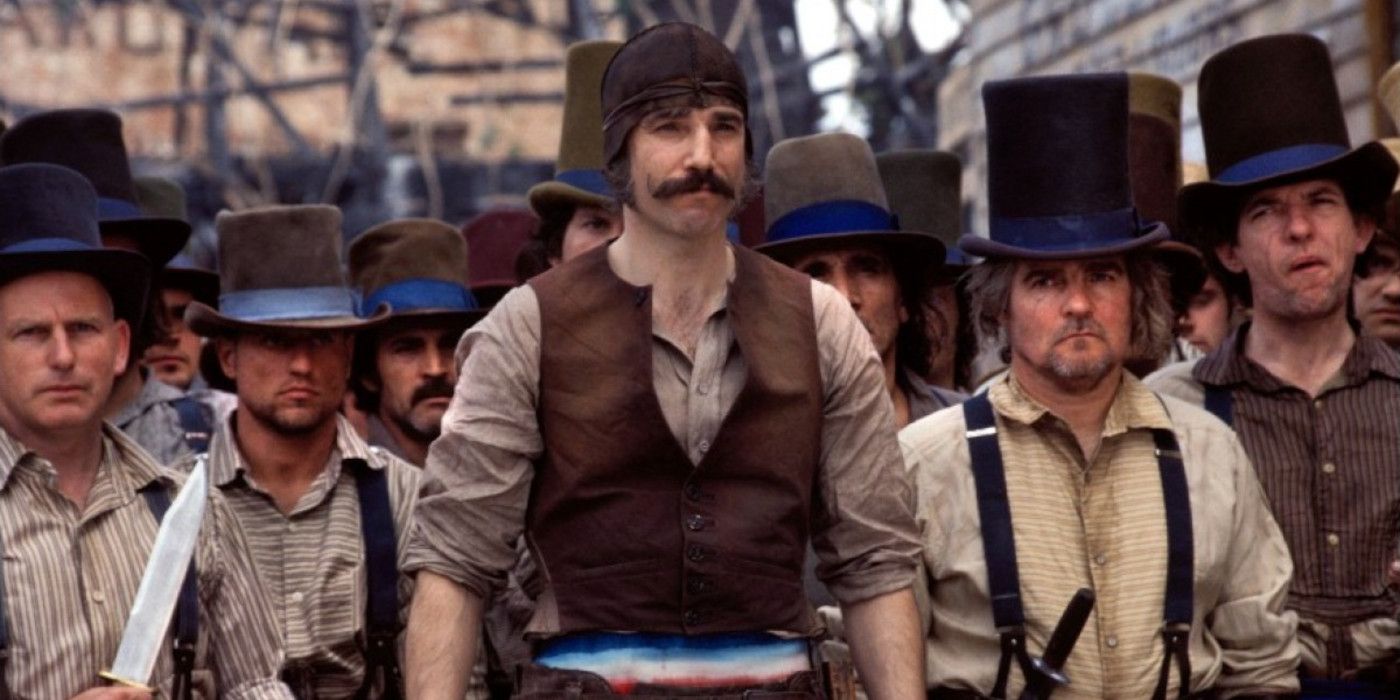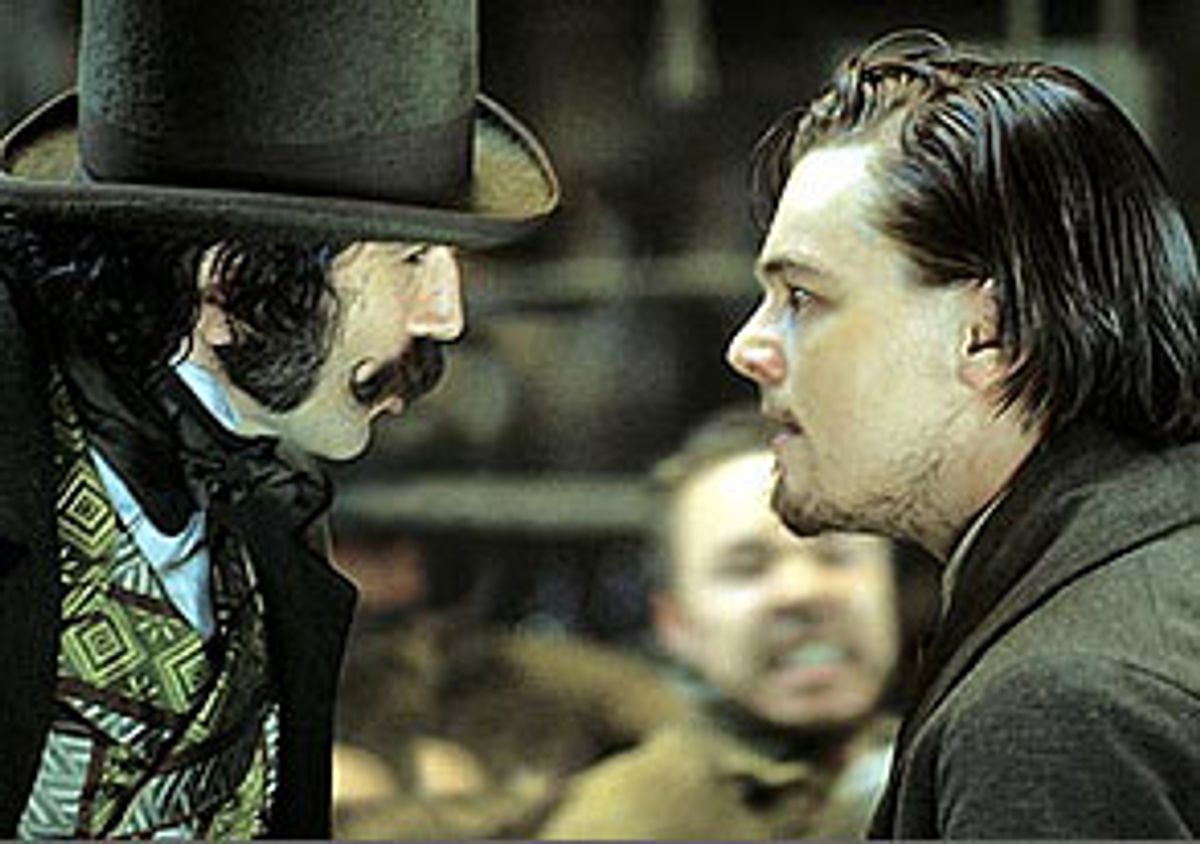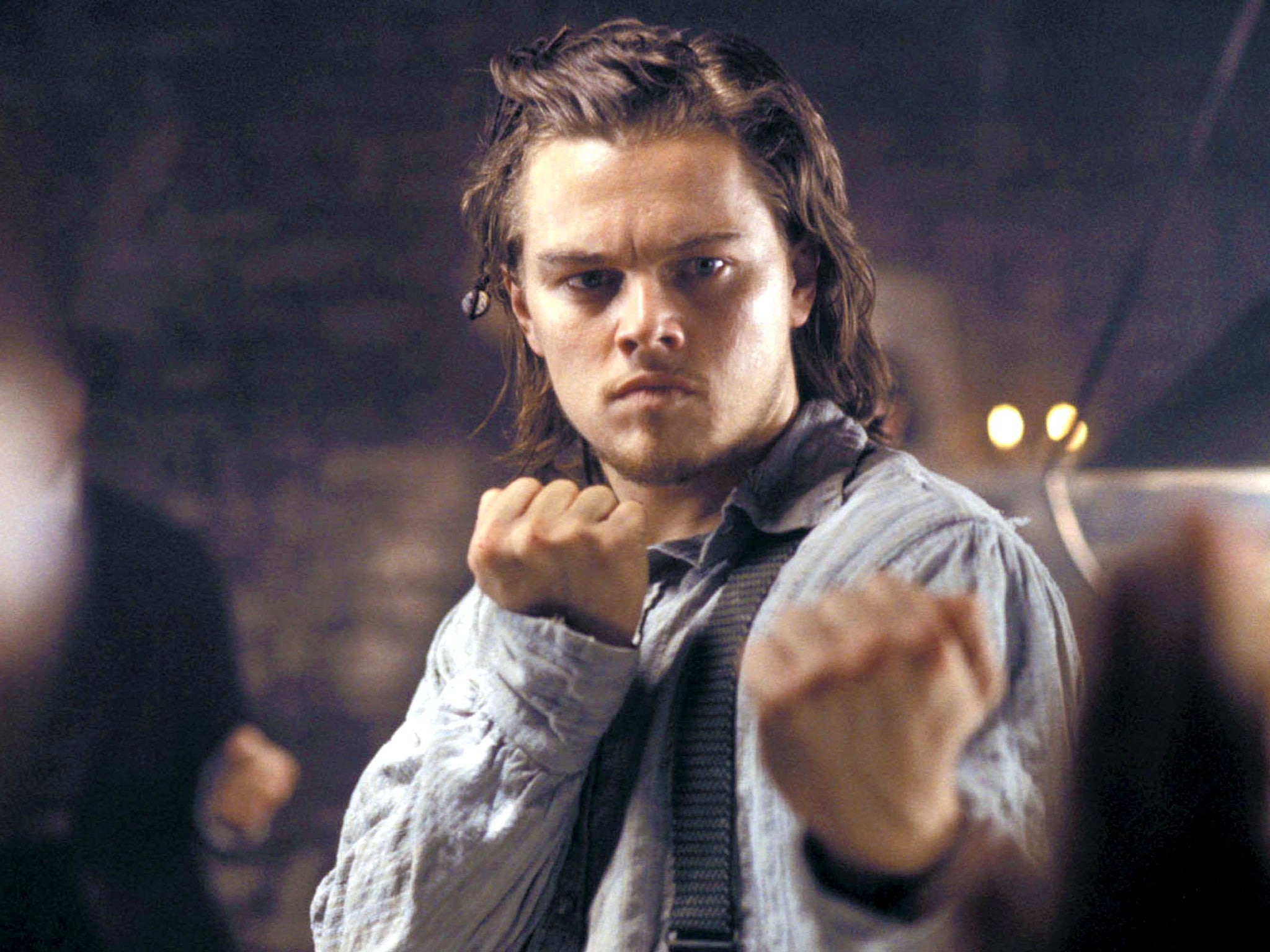Gangs of New York: A Cinematic Epic of Vice and Virtue
Introduction: Martin Scorsese's "Gangs of New York" is a sprawling epic that delves into the tumultuous and violent underbelly of 19th-century New York City. Released in 2002, the film is a masterful blend of historical drama, gritty realism, and cinematic spectacle. Set against the backdrop of the Civil War era, "Gangs of New York" explores themes of power, corruption, immigration, and the struggle for survival in a rapidly changing society. With a stellar cast led by Leonardo DiCaprio, Daniel Day-Lewis, and Cameron Diaz, the film received critical acclaim for its bold vision, immersive storytelling, and stunning production design. In this review, we'll delve deep into the world of "Gangs of New York," examining its themes, performances, and enduring impact.
Martin Scorsese's "Gangs of New York" is a sprawling epic that delves into the tumultuous and violent underbelly of 19th-century New York City. Released in 2002, the film is a masterful blend of historical drama, gritty realism, and cinematic spectacle. Set against the backdrop of the Civil War era, "Gangs of New York" explores themes of power, corruption, immigration, and the struggle for survival in a rapidly changing society. With a stellar cast led by Leonardo DiCaprio, Daniel Day-Lewis, and Cameron Diaz, the film received critical acclaim for its bold vision, immersive storytelling, and stunning production design. In this review, we'll delve deep into the world of "Gangs of New York," examining its themes, performances, and enduring impact.
Setting and Historical Context:
The film opens in 1846, with the streets of New York City teeming with immigrants, gangs, and political turmoil. At the heart of the story is the Five Points neighborhood, a notorious slum controlled by rival gangs vying for dominance. Against this backdrop, Scorsese paints a vivid portrait of a city in flux, where old traditions clash with new realities and where the American Dream is both tantalizingly close and impossibly distant.
The attention to historical detail in "Gangs of New York" is remarkable, from the elaborate costumes to the meticulously recreated sets. Scorsese and his team went to great lengths to capture the look and feel of mid-19th-century New York, drawing inspiration from contemporary accounts, photographs, and archival research. The result is a film that immerses viewers in a bygone era, bringing to life the sights, sounds, and smells of a city on the brink of transformation.
Themes and Symbolism: At its core, "Gangs of New York" is a story about power – who wields it, who craves it, and who suffers under its weight. The film explores this theme through the lens of its central characters: Amsterdam Vallon (DiCaprio), a young Irish immigrant seeking revenge for his father's death; Bill the Butcher (Day-Lewis), a ruthless gang leader who rules the Five Points with an iron fist; and Jenny Everdeane (Diaz), a beautiful pickpocket caught between them.
At its core, "Gangs of New York" is a story about power – who wields it, who craves it, and who suffers under its weight. The film explores this theme through the lens of its central characters: Amsterdam Vallon (DiCaprio), a young Irish immigrant seeking revenge for his father's death; Bill the Butcher (Day-Lewis), a ruthless gang leader who rules the Five Points with an iron fist; and Jenny Everdeane (Diaz), a beautiful pickpocket caught between them.
Through their interactions and conflicts, "Gangs of New York" delves into questions of identity, loyalty, and the nature of power itself. Bill the Butcher, with his fervent nativism and disdain for outsiders, represents the old guard clinging to tradition in the face of change. Amsterdam, torn between his Irish heritage and his desire for assimilation, embodies the struggle of the immigrant experience – to find a place in a society that often rejects them.
The film's title itself carries symbolic weight, evoking images of lawlessness, violence, and urban decay. Yet beneath the surface, "Gangs of New York" also explores themes of community, resilience, and the bonds that unite us. In the midst of chaos and conflict, characters find moments of humanity and connection, reminding us that even in the darkest of times, there is hope.
Performances: One of the standout aspects of "Gangs of New York" is its stellar cast, led by Leonardo DiCaprio and Daniel Day-Lewis in unforgettable performances. DiCaprio brings depth and nuance to the role of Amsterdam Vallon, capturing the character's journey from wide-eyed innocence to hardened resolve. His chemistry with Cameron Diaz, who shines as the streetwise Jenny Everdeane, adds an emotional resonance to the film's central romance.
One of the standout aspects of "Gangs of New York" is its stellar cast, led by Leonardo DiCaprio and Daniel Day-Lewis in unforgettable performances. DiCaprio brings depth and nuance to the role of Amsterdam Vallon, capturing the character's journey from wide-eyed innocence to hardened resolve. His chemistry with Cameron Diaz, who shines as the streetwise Jenny Everdeane, adds an emotional resonance to the film's central romance.
However, it is Daniel Day-Lewis who truly steals the show as Bill the Butcher, delivering a tour-de-force performance that is both terrifying and mesmerizing. With his piercing gaze, menacing presence, and larger-than-life persona, Day-Lewis embodies the primal brutality and magnetic charisma of his character. His scenes crackle with intensity, whether he's delivering a fiery speech or engaging in a brutal brawl.
Supporting performances from the likes of Jim Broadbent, John C. Reilly, and Brendan Gleeson round out the ensemble cast, each actor bringing depth and humanity to their roles. Together, they create a rich tapestry of characters that populate the world of "Gangs of New York," adding layers of complexity and nuance to the film's narrative.
Direction and Cinematography: As one would expect from a master filmmaker like Martin Scorsese, the direction and cinematography of "Gangs of New York" are nothing short of spectacular. Scorsese's trademark style – bold, kinetic, and immersive – is on full display here, as he expertly navigates the film's epic scope and intricate plot.
As one would expect from a master filmmaker like Martin Scorsese, the direction and cinematography of "Gangs of New York" are nothing short of spectacular. Scorsese's trademark style – bold, kinetic, and immersive – is on full display here, as he expertly navigates the film's epic scope and intricate plot.
The film's cinematography, overseen by longtime Scorsese collaborator Michael Ballhaus, is equally impressive, capturing the gritty realism and grandeur of 19th-century New York. From sweeping aerial shots of the cityscape to intimate close-ups of the characters, every frame is meticulously composed and visually striking. The use of color, light, and shadow adds depth and atmosphere to the film, drawing viewers into its richly realized world.
Scorsese's direction is also marked by his attention to detail and his ability to elicit powerful performances from his cast. Whether orchestrating elaborate set pieces or crafting intimate character moments, he demonstrates a keen understanding of storytelling and a mastery of his craft. The result is a film that is as thought-provoking as it is visually stunning, a testament to the enduring talent of one of cinema's greatest auteurs.
Legacy and Impact:
In the nearly two decades since its release, "Gangs of New York" has left an indelible mark on both audiences and critics alike. Its bold vision, compelling storytelling, and powerhouse performances have cemented its status as a modern classic, earning it a place in the pantheon of great American cinema.
The film's exploration of themes such as immigration, identity, and power remains as relevant today as it was upon its release, resonating with audiences across generations. Its influence can be seen in subsequent works of historical drama, as well as in the ongoing conversations surrounding issues of race, class, and social justice.
Moreover, "Gangs of New York" stands as a testament to the enduring power of cinema to illuminate the past, challenge the present, and inspire change. Through its vivid depiction of a bygone era, it invites viewers to reflect on the complex forces that shape our world and the enduring struggle for justice and equality.
Conclusion: In conclusion, "Gangs of New York" is a cinematic tour de force that dazzles and captivates in equal measure. With its stellar cast, masterful direction, and immersive storytelling, it transports viewers to a time and place unlike any other, inviting them to experience the highs and lows of the human condition.
In conclusion, "Gangs of New York" is a cinematic tour de force that dazzles and captivates in equal measure. With its stellar cast, masterful direction, and immersive storytelling, it transports viewers to a time and place unlike any other, inviting them to experience the highs and lows of the human condition.
Through its exploration of power, identity, and the immigrant experience, the film transcends its historical setting to speak to universal truths about the human experience. It challenges us to confront the darkest aspects of our society while also celebrating the resilience and humanity that endure in the face of adversity.
In the pantheon of Martin Scorsese's legendary filmography, "Gangs of New York" shines as a crowning achievement, a bold and ambitious epic that leaves an indelible mark on all who encounter it. As we continue to grapple with the complexities of our world, its message remains as timely and urgent as ever: that in the face of injustice and oppression, the bonds of community and the power of the human spirit can prevail.









![Passengers [EN]](https://cdn.bulbapp.io/frontend/images/5f9c7330-c1da-47b3-8f23-ec432114d585/1)























